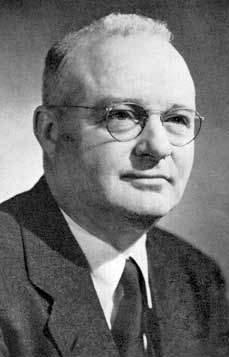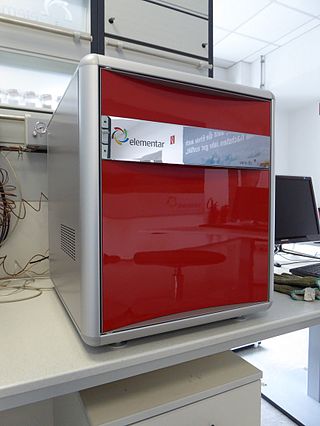Related Research Articles

A flavoring, also known as flavor or flavorant, is a food additive used to improve the taste or smell of food. It changes the perceptual impression of food as determined primarily by the chemoreceptors of the gustatory and olfactory systems. Along with additives, other components like sugars determine the taste of food.
Asparagus is a perennial flowering plant species in the genus Asparagus native to Eurasia. Widely cultivated as a vegetable crop, its young shoots are used as a spring vegetable.

Thomas Midgley Jr. was an American mechanical and chemical engineer. He played a major role in developing leaded gasoline and some of the first chlorofluorocarbons (CFCs), better known in the United States by the brand name Freon; both products were later banned from common use due to their harmful impact on human health and the environment. He was granted more than 100 patents over the course of his career.

The Maillard reaction is a chemical reaction between amino acids and reducing sugars to create melanoidins, the compounds which give browned food its distinctive flavor. Seared steaks, fried dumplings, cookies and other kinds of biscuits, breads, toasted marshmallows, and many other foods undergo this reaction. It is named after French chemist Louis Camille Maillard, who first described it in 1912 while attempting to reproduce biological protein synthesis. The reaction is a form of non-enzymatic browning which typically proceeds rapidly from around 140 to 165 °C. Many recipes call for an oven temperature high enough to ensure that a Maillard reaction occurs. At higher temperatures, caramelization and subsequently pyrolysis become more pronounced.

Curcumin is a bright yellow chemical produced by plants of the Curcuma longa species. It is the principal curcuminoid of turmeric, a member of the ginger family, Zingiberaceae. It is sold as a herbal supplement, cosmetics ingredient, food flavoring, and food coloring.

The American Chemical Society (ACS) is a scientific society based in the United States that supports scientific inquiry in the field of chemistry. Founded in 1876 at New York University, the ACS currently has more than 155,000 members at all degree levels and in all fields of chemistry, chemical engineering, and related fields. It is one of the world's largest scientific societies by membership. The ACS is a 501(c)(3) non-profit organization and holds a congressional charter under Title 36 of the United States Code. Its headquarters are located in Washington, D.C., and it has a large concentration of staff in Columbus, Ohio.
A highlighter, also called a fluorescent pen, is a type of writing device used to bring attention to sections of text by marking them with a vivid, translucent colour. A typical highlighter is fluorescent yellow, with the color coming from pyranine. Different compounds, such as rhodamines are used for other colours.

An aroma compound, also known as an odorant, aroma, fragrance or flavoring, is a chemical compound that has a smell or odor. For an individual chemical or class of chemical compounds to impart a smell or fragrance, it must be sufficiently volatile for transmission via the air to the olfactory system in the upper part of the nose. As examples, various fragrant fruits have diverse aroma compounds, particularly strawberries which are commercially cultivated to have appealing aromas, and contain several hundred aroma compounds.

Elemental analysis is a process where a sample of some material is analyzed for its elemental and sometimes isotopic composition. Elemental analysis can be qualitative, and it can be quantitative. Elemental analysis falls within the ambit of analytical chemistry, the instruments involved in deciphering the chemical nature of our world.
Diphosphorus is an inorganic chemical with the chemical formula P
2. Unlike nitrogen, its lighter pnictogen neighbor which forms a stable N2 molecule with a nitrogen to nitrogen triple bond, phosphorus prefers a tetrahedral form P4 because P-P pi-bonds are high in energy. Diphosphorus is, therefore, very reactive with a bond-dissociation energy (117 kcal/mol or 490 kJ/mol) half that of dinitrogen. The bond distance has been measured at 1.8934 Å.

Stephen James Lippard is the Arthur Amos Noyes Emeritus Professor of Chemistry at the Massachusetts Institute of Technology. He is considered one of the founders of bioinorganic chemistry, studying the interactions of nonliving substances such as metals with biological systems. He is also considered a founder of metalloneurochemistry, the study of metal ions and their effects in the brain and nervous system. He has done pioneering work in understanding protein structure and synthesis, the enzymatic functions of methane monooxygenase (MMO), and the mechanisms of cisplatin anticancer drugs. His work has applications for the treatment of cancer, for bioremediation of the environment, and for the development of synthetic methanol-based fuels.

BMS-906024 is a drug with a benzodiazepine structure, developed by Bristol-Myers Squibb and disclosed at the spring 2013 American Chemical Society meeting in New Orleans to treat breast, lung, colon cancers and leukemia. The drug works as a pan-Notch inhibitor. The structure is one of a set patented in 2012, and is being studied in clinical trials.

Vani Deva Hari, who blogs as the Food Babe, is an American author, activist, and affiliate marketer who criticizes the food industry. She started the Food Babe blog in 2011, and it received over 54 million views in 2014.

The Mystery of Matter: Search for the Elements is a 2014 American documentary miniseries, which premiered nationwide on August 19, 2015. The PBS documentary, in three-episodes of one hour each, was directed by Stephen Lyons and Muffie Meyer.

Diprogulic acid is a precursor used in commercial ascorbic acid production. In agriculture, its sodium salt, dikegulac sodium, is used as a plant growth regulator, primarily used as a branching agent. When it is taken up by a plant, dikegulac sodium is translocated to its apical meristems, where it inhibits DNA synthesis. This suppresses apical dominance in the plant and can stimulate lateral branching, resulting in a bushier growth habit. Dikegulac sodium is sometimes used to inhibit fruiting and flowering.

Eric Block is an American chemist whose research has focused on the chemistry of organosulfur and organoselenium compounds, Allium chemistry, and the chemistry of olfaction. As of 2018, he is Distinguished Professor of Chemistry Emeritus at the University at Albany, SUNY.
Sarah Elizabeth Reisman is a Chemistry Professor at the California Institute of Technology. She received the (2013) Arthur C. Cope Scholar Award and the (2014) Tetrahedron Young Investigator Award for Organic Synthesis. Her research focuses on the total synthesis of complex natural products.
Henry "Hoby" Wedler is an American chemist and entrepreneur. He was born blind and has advocated for greater accessibility of science to disabled students. Wedler even suggests that visually impaired chemists could have an advantage over sighted colleagues, due to the need to mentally imagine the structure of organic compounds; "I've been visualizing things my entire life".
Ingrid Montes, also known as Ingrid del Carmen Montes González is a full professor in the Department of Chemistry at the University of Puerto Rico, Río Piedras campus. She attained tenure in 1998. Her research focus is on chemical education and organometallic chemistry. Montes has been Director-at-large at the American Chemical Society (ACS) since 2013. Montes founded the "Festival de Química" in 2005, this program was then adopted by the ACS in 2010.
Richmond Sarpong is a Ghanaian-American chemist who is a professor at the University of California, Berkeley. Sarpong works on natural product total synthesis to better understand biological systems and allow for the development of novel therapeutics. He was awarded a Guggenheim Fellowship in 2017, and was elected a fellow of the American Academy of Arts and Sciences in 2020. He serves on the editorial boards of Organic Syntheses, Accounts of Chemical Research and Synlett.
References
- ↑ Fulton, April (27 June 2014). "Chemist With Visual Flair Answers Burning Food Science Questions". NPR. Retrieved 18 December 2016.
- ↑ Wolf, Lauren K. (July 7, 2014). "C&EN Talks With Andy Brunning". Chemical & Engineering News. Vol. 92, no. 27. Retrieved 18 December 2016.
- ↑ Zhang, Sarah (18 September 2014). "The Chemistry Behind the Different Colors of Autumn Leaves". Gizmodo. Retrieved 18 December 2016.
- ↑ Andy Brunning (7 December 2015). "Periodic Graphics With Compound Interest". Chemical & Engineering News Archive. 93 (48): 44. doi:10.1021/cen-09348-scitech3.
- ↑ Feltman, Rachel (21 September 2015). "How deodorant makes you stink less". Washington Post. Retrieved 18 December 2016.
- ↑ "VIDEO: What Causes Garlic Breath?". Time . 9 June 2014. Retrieved 18 December 2016.
- ↑ Lorch, Mark (2017-03-16). "How chemistry can make your ironing easier". The Conversation. Retrieved 25 May 2017.
- ↑ Drahl, Carmen (2017-02-14). "What You Need To Know About Theobromine, Poster Child For Valentine's Chocolate Chemistry". Forbes. Retrieved 25 May 2017.
- ↑ Drahl, Carmen (2017-01-02). "San Francisco's Rotten Egg Smell Mystery Is All About The Sulfur Chemistry". Forbes. Retrieved 25 May 2017.